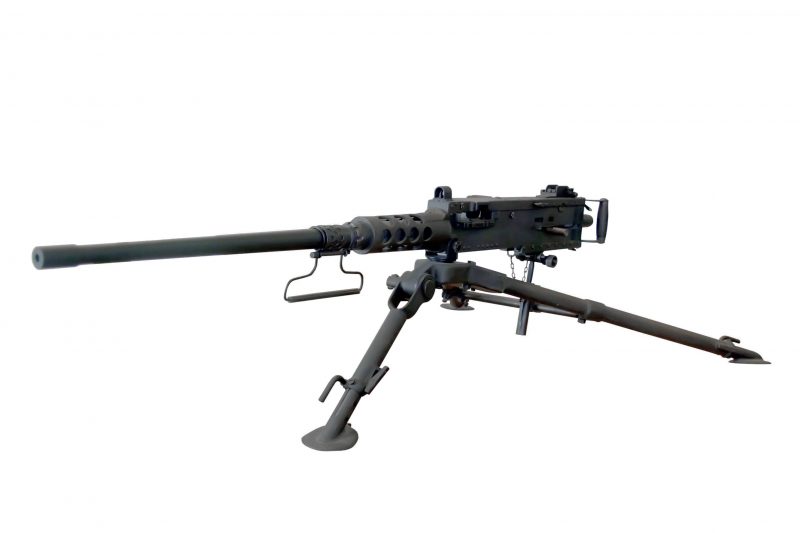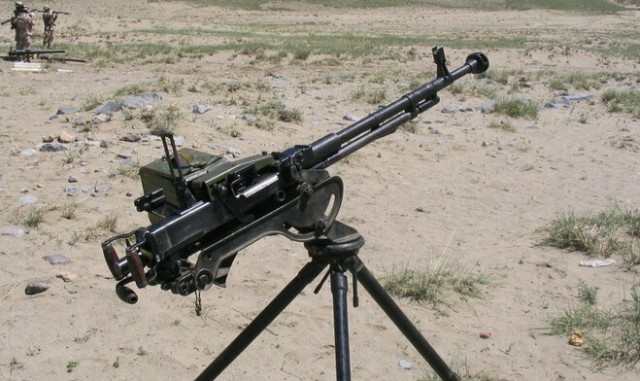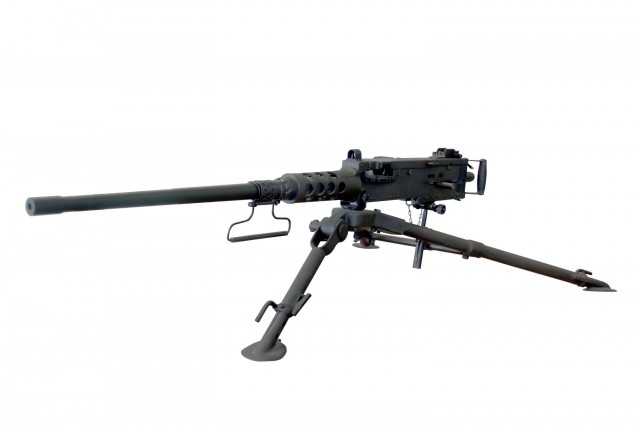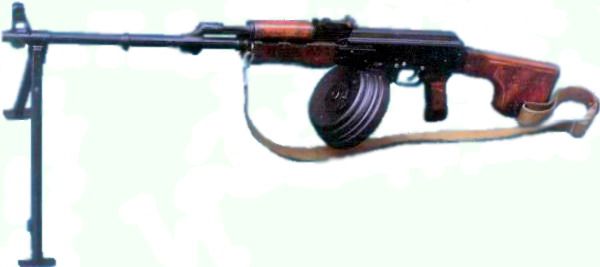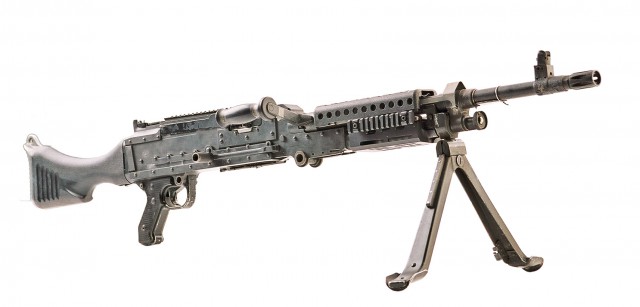The machine gun became a formidable element on the battlefields of the First World War where they were largely responsible for the stalemate in the trenches. Since then they have been under constant development bring more firepower to the front lines than ever before.
Let us take a look at 5 of the best machine guns of all time!
5. DShK
This Soviet heavy machine gun fires a 12.7 x 108 cartridge. It is frequently mounted on wheels with a shield of armour plate. It was designed by Vasily Degtyaryov, and Georgi Shpagin updated the cartridge feeding mechanism. It is sometimes called Dushka (dear) by adding letters to the name.
DShk 38 was the standard machine gun of the Red Army during World War II. It could only be fed 30 rounds, which made for a poor rate of fire.
The machine gun has several functions. It can be an anti-aircraft gun, mounted on a tripod or on a truck. It can be mounted on IS-2 and light amphibious tanks as well as ISU-52 self-propelled guns. From a trolley, it is an infantry support.
The DShk has been almost entirely in Russia by modern designs such as the NSV and Kord. Nevertheless, it is still widely used by China, Pakistan, Romania and other countries.
4. M2 Browning
The original name of the .50 Caliber Machine Gun is the M2 Browning. The prototype was developed by John M. Browning in 1918 right after WWI when the world was saying farewell to trench warfare.
The machine gun has been in production since 1921 and more than 3 million units have been produced to date, currently by a plethora of companies most notably General Dynamics, US Ordnance, Manroy Engineering UK, Sabre Defense, etc.
The M2 is transportable by a crew thanks to a back plate with a spade, trigger, grips and latch release. Furthermore, the gun comes with a flash suppressor and spare barrel assembly making it a portable machine gun compared to other heavy weapons.
The M2 has been used by the United States in almost all its conflicts since its production. The long list includes WW2, Korean War, Suez Crisis, Vietnam War, Iraq War, Invasion of Panama, Somali War, War in Afghanistan, etc.
3. RPK74
The RPK, more widely known as the Kalashnikov, is another Soviet design. Mikhail Kalshnikov developed it in the late 1950s. It is still used by the armies of nations that used to belong to the Soviet Union and some African and Asian states.
The hand held RPK74 can fire for long periods without losing accuracy due to the heat of the barrel. This is because the chrome-lined barrel is quite long and heavy. It is fixed and cannot be replaced on the field. It also has a bipod near the muzzle.
The muzzle is threaded, allowing for devices such as flash hiders, compensators, and blank-firing adaptors. When a muzzle device is not being used, the muzzle threads may be covered.
The RPK has a thick wooden fore grip and a buttstock that allows the user to fire from the ground comfortably. The machine gun has a standard grip.
2. M240B
Known as the M240 Bravo or simply 240, this family of medium machine guns has been employed in the United States Armed Forces since the end of the 1970s. It is gas-operated, belt-fed and fires a 7.62 x 51 mm NATO cartridge. It is used widely by rifle companies, as well as ships, planes, and vehicles. It is the standard medium machine gun of the US Marine Corps and some Army units. The Navy uses the weapon system.
It is heavier than comparable machine guns but is nevertheless considered reliable. It is fed with disintegrating belts and can fire most 7.62 mm ammunition. Variants differ in weight and features. The M240B can employ a buttstock and bipod for ground combat, though it can also be used on a tripod, on vehicles, aircraft and water vessels.
1. MG-42
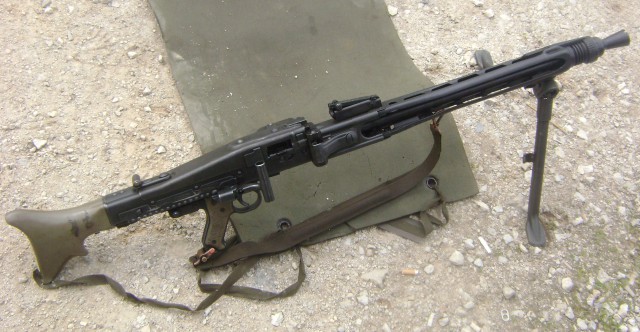
This is a Mauser machine gun and uses the Mauser cartridge (7.92x57mm) and is suited for general-purpose. It was created in Nazi Germany and was heavily used by the Waffen-SS and Wehrmacht at the end of World War 2. It was initially made to replace the Mg-34 as it was cheaper to manufacture as well as quicker to make too, but in the end, both machine guns remained in production throughout the War.
The MG-42 machine gun has been proven to be reliable, durable, simple and easy to use and is most handy in that it can produce a higher than usual volume of suppressive fire. It could average between 1,200 and 1,500 rounds per minute which was fantastic for this type of gun.
This gun was still being used beyond the War ending and was the basis for the later MG1, which was almost identical to the MG-42, which took 7.62x51mm NATO chambers. This then evolved to the MG1A3 and then eventually the Bundeswehr MG-3.
Sources:
- “Machine Gun RPK” by Polish military – Ministerstwo Obrony Narodowej / Polish Ministry of Defence http://www.wp.mil.pl. Licensed under Attribution via Commons.
- “M2 Browning, Musée de l’Armée” by Rama. – Self-creation.. Licensed under CC BY-SA 2.0 fr via Commons.
- “Doushka desert” by Notmuchhigher – Own work. Licensed under CC BY-SA 3.0 via Commons.
